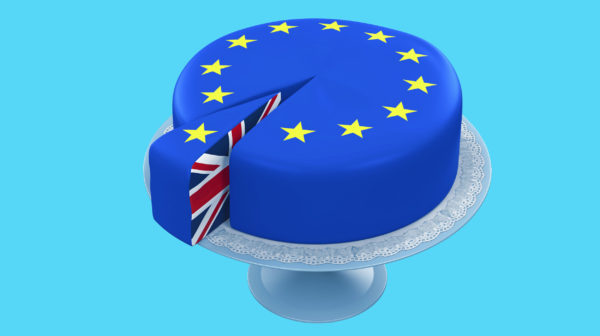Do you know the story of six blindfolded people who were asked to describe what an elephant looks like after feeling different parts of its body?
- The one who feels a leg says the elephant is like a pillar.
- The one who feels the tail says the elephant is like a rope.
- The one who feels the trunk says the elephant is like a tree branch.
- The one who feels an ear says the elephant is like a hand fan.
- The one who feels the belly says the elephant is like a wall.
- The one who feels a tusk says the elephant is like a solid pipe.
Finally, it’s explained to them: “You are all right, in a way. The reason every one of you describes it differently is because each of you touched a different part of the elephant. It has all the features you mentioned, yet you have not described the whole elephant.”
Why you need a creative brief
A creative brief is critical because marketing projects are a lot like elephants. They’re big and complicated and many people touch them. This can include brand managers, product marketers, technology teams and developers, designers, writers, and many more. Depending on the role each plays, they’ll view the marketing project differently.
A creative brief is critical because it pulls all the pieces of a marketing effort together in a single document so everyone working on it has a unified vision. A creative brief helps everyone see the “elephant” in the same way.
Creative briefs keep complex marketing projects running smoothly and prevent misunderstandings and delays by:
- Connecting business objectives with creative strategies
- Building team consensus
- Aligning expectations
- Documenting budgets
- Defining measurable goals.
A creative brief provides the clarity that ensures a campaign stays on track, is executed correctly and meets its objectives.
What is a creative brief?
Ask six different marketing people what a creative brief is and it’s likely you’ll get six different answers. Here’s one of the most complete:
A creative brief is a unifying document that identifies and documents all the key aspects of a marketing campaign or product or service launch. It tells the high-level story and explains why it’s important to the audience. It documents where and how the story will be told and the results the initiative is expected to generate. It serves as the ultimate guide for the creation of new messages and marketing materials.
How to develop a creative brief
In the best cases, a creative brief is generated through meetings, interviews, discussions and information sharing between product or service marketers and an agency or creative team before any work begins. Writing the brief is an iterative process and it should not be considered “final” until all parties involved understand it completely and are able to agree on the contents of the document.
The development of a creative brief is an opportunity to build consensus. Referring back to our earlier example, if you go into a creative marketing project without it, you could have members building legs, ears and tusks rather than a complete elephant.
Throughout the project, the creative brief should be the touch point that guides the work.
What to include in a creative brief
Here are the elements of the project that should be clearly explained, defined and documented in a creative brief:
- Information about the company, product or service. This should include details about the company that must be included in the marketing messages and materials, along with the reasons for developing the product or service and its key features and attributes.
- Insights into the target audience. Define the audience for the product or service and explain what makes them special. Include insights that humanize statistics. Describe how the offering will enhance or complete their lives, including how it will make them feel.
- Brand attributes, promise and mission. Include all aspects of the company brand that must be taken into consideration when developing the campaign.
- Competitive landscape. Provide an overview of other companies offering similar things and a clear position on what makes the product or service stand out from others.
- Business objectives. Clearly define the results the business wants to achieve throughout and at the end of the campaign. Paint a picture of what success looks like.
- Offer. Create a compelling offer that will appeal to your target audience and describe it.
- Call to action. Explain what you want your target audience to do at each step of the campaign: learn more, contact a representative, visit an office, make a purchase.
- Metrics for measuring success. Develop — and come to agreement on — metrics that will define success for every step of the marketing effort.
- Supporting data. Determine the data you’ll need to measure success and how you will access it.
- Functional specifications. Thoroughly document any technical aspects of your marketing effort, including anything associated with website development, digital ads or email distribution.
- Approval process. The best-planned marketing efforts can collapse when it comes time to get approval. Clearly define who needs to approve different aspects of the campaign and when. Don’t forget legal and compliance in the plan. Getting consensus on this prior to creative development will make all the difference when it comes to delivering assets on time.
- Timelines. Include a timeline in the creative brief detailed enough that everyone involved knows what is expected of them and when. Don’t make it too complex or hard to understand.
- Budget. Define the budget for every aspect of the marketing effort. This can help avoid surprises in the development process.
Other things to consider
Here are other things you can do to make your creative briefs more effective:
- Respect the word “brief”. The document should be thorough, but also concise, so people want to read it. Lengthy briefs are often ignored.
- Know your audience. If you’re working with a new division or product type that the creative team is not familiar with, add more details to the brief.
- Include all stakeholders. Leaving people out will cause more issues over the long term than including too many early in the process.
- Have conversations. A creative brief shouldn’t be written in a vacuum. Base it on thought-provoking discussions with key contributors. Cite conversations in the brief. Using specific quotes is a great way to bring clarity and demonstrate to stakeholders that they’re being heard.
- Use data. Numbers-based insights inspire clearer, better-defined creative ideas.
- Customize your briefs. It’s a big mistake to take a one-size-fits-all approach to developing creative briefs. Simpler projects can use standardized briefs. More complex ones deserve customized ones.
One last thing to consider: Don’t go into auto-pilot when it comes to writing a creative brief. If there’s nothing unique or special about the creative brief, the resulting creative won’t be very… creative.
Next steps
Need help developing world-class creative for your firm? Contact Carpenter Group, an agency that has developed award-winning campaigns for decades. We know how to work with your team to gather the insights needed to build a perfect creative brief and gain consensus on it. We’ll use that brief to develop creative campaigns and collateral that will set you
r offering apart and generate measurable results.




